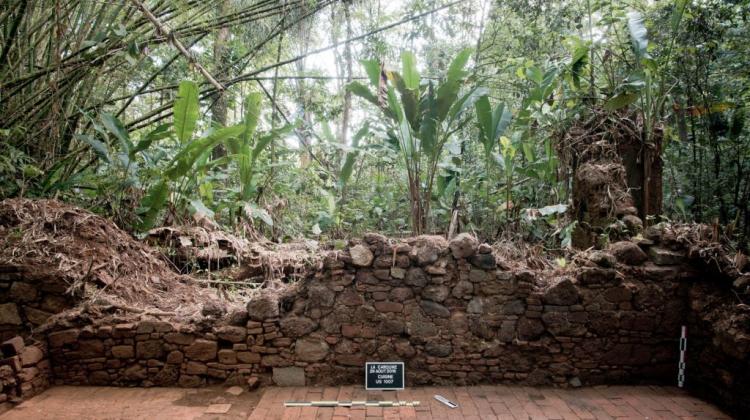Polish archaeologists studied an old plantation in French Guiana

Overseer\'s house, a fragment of the plantation owner\'s property and kitchen building in the 200 years old plantation in French Guiana have been studied by Wrocław archaeologists. It was the first Polish expedition in the overseas department; it was part of a French project.
"Two hundred years ago hundreds of plantations functioned in French Guiana, which used slave labour. Now the jungle has overgrown all of them. So far, only a few of them have been surveyed" - explained participant of excavations, Dr. Paweł Duma of the Institute of Archaeology at the University of Wrocław, who has just returned from South America.
Poles focused on excavations at the plantation La Caroline in the north-eastern part of French Guiana. It is known that the plantation with an area of approx. 100 hectares operated from the late eighteenth century to the 1870s or 1880s.
"Its fall is associated with the end of slavery. The lack of cheap labour made plantations completely unviable due to their poor performance - the climate of Guyana is very unfavourable" - told PAP Dr. Duma.
The plant grown in La Caroline was achiote, used to obtain a dye. Later there were also attempts to cultivate cotton, but these attempts were unsuccessful. Dr. Duma said that in the 1860s the area of La Caroline was visited by Polish naturalist Konstanty Jelski, who searched for rare species of birds and bats. According to his reports, the plantation was neglected and partly overgrown. It maintained a culture of clove trees.
In the late nineteenth century, Guyana planters tried to replace slaves with prisoners sent from Europe. "Those, however, were quickly decimated by the severe conditions of detention, poor sanitation and tropical diseases" - said Dr. Duma.
During this year archaeological research scientists managed to partially unearth the kitchen building with the remains of the furnace, a fragment of the owner\'s house with the main stairs and the overseer\'s house. Dr. Duma explained that the walls of the buildings mostly had a frame structure. This means that the spaces between the beams were filled with local stone or brick.
The plantation owner\'s house was the central building, surrounded by residential and utility buildings. Among them was a free-standing kitchen, overseer\'s house with a workshop, drying house, stables, buildings for slaves or labourers. Also preserved are artificial terraces reinforced with blocks of stone and the monumental staircase leading to the now inactive canal. From there, the goods were floated to the nearby river, and further to the sea port in Cayenne.
"Its relatively shallow depth meant that only a few ships were able to enter it and most sailed to Martinique. This caused shortages in the supply for planters and meant that local producers found it difficult to export their products" - said the scientist.
Archaeologists were surprised by the fact that among the objects discovered inside the buildings dominated items originating from Europe. Among them were pieces of kaolin pipes imported from France, the Netherlands and the British Isles, fragments of pottery and numerous glass bottles.
"This region abounds in the sites of this type, but so far only a few of them have been surveyed. For many decades, researchers have focused attention mainly on the pre-Columbian sites, predating the arrival of Europeans in America. In recent years, archaeologists in the New World are involved in projects that concern modern times and study phenomena related to the period of colonization "- noted Dr. Duma.
Scientists do not yet know the exact number of old plantations in French Guiana and their layout. On maps of the era only part of them are marked, often inaccurately. Some of them could be located with modern technology in the form of air laser scanning (ALS).
The initiator of the project was the conservator of archaeological sites in French Guiana, Dr. Nicolas Payraud (Direction des affaires culturelles de Guyane). American archaeologists from the University of Pennsylvania worked at the same time within the area of the same plantation, conducting research within the quarter inhabited by slaves or labourers. The expedition was financed by the French Republic.
PAP - Science and Scholarship in Poland, Szymon Zdziebłowski
szz/ mrt/
tr. RL
Przed dodaniem komentarza prosimy o zapoznanie z Regulaminem forum serwisu Nauka w Polsce.















